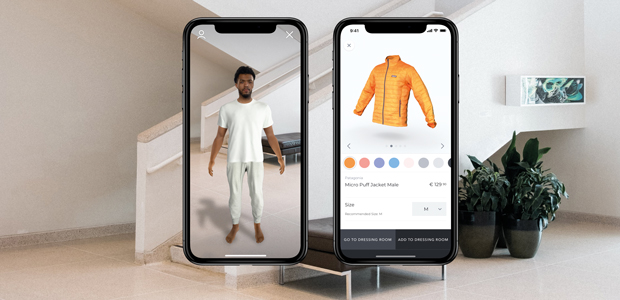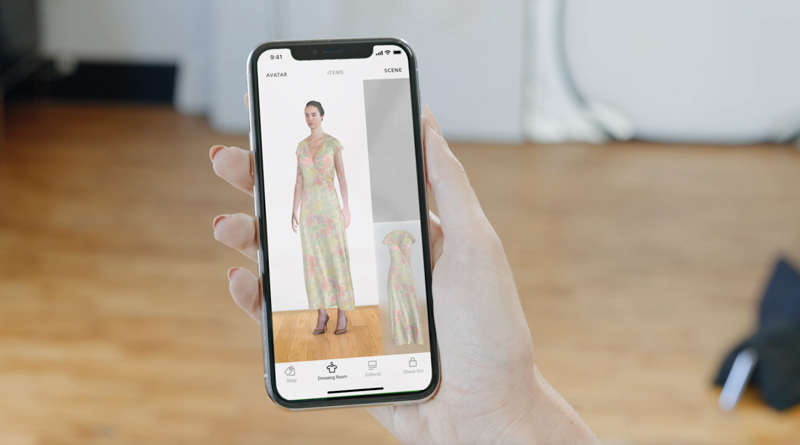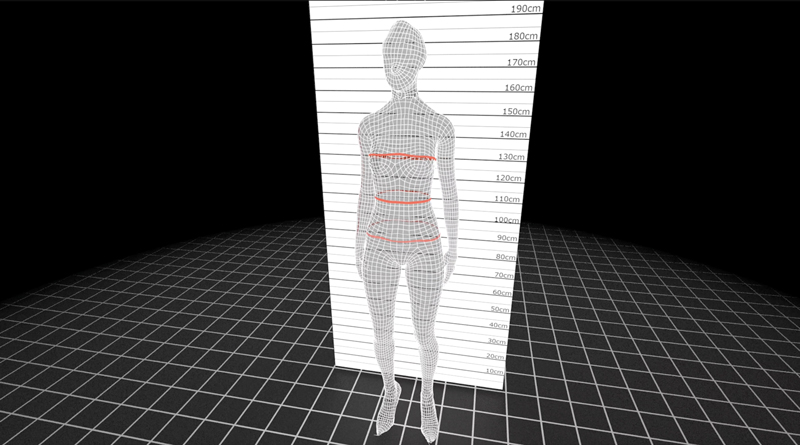
Looking at Reactive Reality Predictions for 2022
As the world of fashion is growing at a rapid rate, but so is the footprint the industry is leaving on the planet, we spoke to Stefan Hauswiesner, CEO and co-founder of Reactive Reality, the augmented reality leader enhancing e-commerce for retailers, who explained more about the vital role that AR will play in reducing the carbon footprint of the fashion industry and some of the key consumer fashion trends of that we will see in 2022.
How has 2021 and the pandemic changed the way people shop?
One of the biggest outcomes of the pandemic for consumers was an acceleration towards sustainability and unique shopping experiences. Integrating state-of-the-art technology became more popular and while stores remained partially closed, leading brands and retailers engage consumers via virtual fashion try-on and virtual fashion shows. Simulating real-life shopping kept consumers engaged digitally when physical experiences were no longer an option and drove retailers to explore other options that would keep consumers engaged and loyal to their brand.Purchase decisions were primarily driven by cost and convenience and brands remained focused on resolving the problem of customer discontent; ensuring that they could keep up with the on-demand needs of the younger generations.
Bigger retailers learned to adapt to a more viable way of operating (returns included), however, this still remains one of the biggest challenges within the fashion industry today and will continue into 2022 and beyond.
Much like 2021, next year will see the bigger retailers shift towards a more “green” approach to attract younger consumers and that will require hybrid shopping experiences (integrating immersive tech into their offering) and becoming more personalised/tailored towards the individual. The core offering of personalisation and tailored experiences all lead to the consumer trusting their purchase decisions and thus resulting in fewer bulk purchases and reduced returns.
What role is the metaverse going to play in the future of fashion?
The metaverse has the potential to completely redefine the online shopping experience. As consumers become more comfortable with augmented and virtual reality they will look to personalise their experiences both online and offline. The metaverse, and particularly augmented reality technology, will enable retailers to strengthen their brand & increase consumer loyalty. In addition, AR will impact everything from runway to everyday shopping in physical and online stores.
We are already seeing that fashion brands are recognising the necessity of implementing augmented reality, for example, Balenciaga’s Virtual Reality AW21 Show for example. However, this is only the beginning. AR is here to redefine fashion retail as we know it today, and it will become a core of consistent omnichannel shopping implementation.
In my opinion, within the next decade, the metaverse will be an integral part of the complete product lifecycle, from design to manufacturing, promotion, and sales, while boosting a more circular economy. Physical shops will adapt as a result, instead consisting of a collection of large-format screens where any shopper can experience complete inventory via virtual try-on technology, such as PICTOFiT. In-store and e-commerce experiences will provide shoppers with the option of “self-discovery” or “suggested styles” where AR and the virtual fitting room will be central.

What can the industry do to reduce its carbon footprint and unnecessary emissions (linking back to AR)?
Augmented reality can provide a useful and engaging virtual fitting experience, bringing excitement to previously monotonous e-commerce websites. Consumers can try on clothes virtually on photo-realistic avatars of themselves that leads to better purchasing decisions and improved shopping experiences. However, many problems can be solved before the start of the selling season. AR is here to improve production & promotional processes. Digital processes will take over instead of resource-demanding sampling requiring regular shipments to check key stakeholders' potential improvements during design, development, and fitting and outfit rounds. It speeds up the whole process in a sustainable, convenient, easy to use, money and time-saving manner. With AR, brands have on-model pictures before finally producing all different variations, eliminating unnecessary ones.
Also, the promotional processes are simplified. Fashion show outfits can be prepared faster and with immediate visual previews. Influencers and social media are served digitally, which initially required excessive sampling.
What is the future of bricks and mortar shops?
Brick-and-mortar in the form of an experience centre with limited to no inventory remains an essential part of the Consistent Omni-channel Shopping implementation. Shoppers will use Brick-and-mortar to pick up online orders, see products they've viewed online, and get style advice and product recommendations. Brands and retailers will redefine the concept of their physical stores to meet customers' growing expectations, expanding their service offerings while saving money on the local inventory. Zero-inventory stores/concept of the store as a showroom benefits retailers as well as their customers. By eliminating excess inventory, retailers can focus entirely on the customer and provide them with the best in-store experience. For Brands and retailers, consolidating most inventory in a few central locations will significantly increase margin and inventory turns. Over time, comprehensive service offering increases brand loyalty, translating into bigger basket sizes and increased shopping frequency.
How can augmented reality increase the demand for fashion NFTs?
Fashion NFTs allow people to own digital garment assets just like their real wardrobes. NFTs create exclusivity and thus allow people to express their individual personalities without having to worry about their personal style being copy+pasted millions of times.
More and more luxury brands create fashion NFTs, but with limited commercial success to this date. The real application of NFTs is AR/VR - or the Metaverse. In the future, people will spend large parts of their lives in the Metaverse, working, shopping, and meeting friends. Expressing our individual style will be an essential part of online life, just as it is in the real world today.
What other forms of technology do you predict to see in physical stores in 2022?
As described above, we will see first brands to start the rollout of engaging omnichannel experiences powered by virtual fashion try-on. Such stores will allow shoppers to start online and finish the purchase in the store, or vice versa. Shoppers can virtually try on items that are out of stock, and have them shipped to their homes. This can evolve into the first truly useful zero-inventory stores - stores that do not hold inventory but allow shoppers to try on outfits virtually on large, high fidelity screens. An intermediate step towards ZIS will be automated stores that use smart warehousing and picking robots to cut down on floor space while still enabling a rich shopping experience - powered by virtual try-on.
How will physical retail stores ensure that innovation is inclusive through the implementation of technology?
The ability for PICTOFiT to personalise the shopping journey for each individual allows for an inclusive physical (and digital) experience. Shoppers are no longer limited by physical mannequins or traditional model photography as they shop in stores, with PICTOFiT each shopper can create their own personalised avatar or personalised mannequin in order to visualise how many outfits will look on their body.

How will AR reduce supply chain issues?
The concept of the store as a showroom benefits retailers, their customers and their workers. The combination of decreased square footage, lower rents and freed-up cash typically tied up in massive inventories creates new opportunities for all to enjoy. Consolidating most inventory in a few central locations, rather than scattering it across all stores, will increase margin and inventory turns significantly.
The lack of options available to consumers that determine whether an item of clothing is the correct size, style, or fit is still an issue and I strongly believe that we will start to see more AR and VR options that will realistically portray how clothes look when trying them on in a virtual setting. This is important because consumers currently have to resort to a bulk purchase wherein clothes are returned en masse, which has a detrimental impact on the environment and shines a negative light on the fashion industry. Changing up an online fitting room - with the adoption of augmented reality technology - means that customers can try on items virtually, seeing exactly how it will look when it does arrive. Giving consumers a true reflection of fit and style will reduce the amount of costly and environmentally harmful deliveries and returns.
What do you predict will be the biggest consumer fashion trends of 2022?
Sustainability: AR technology is extremely more useful here. Virtual try-on allows people to see new items (before buying) along with already owned items in the same outfit. This allows for smarter purchasing decisions, only buying items that are actually missing from the wardrobe.
Circular economy: with pre-owned fashion, it is extremely important to show the real condition of each asset and allow people to try on clothes virtually on themselves.
What role will augmented reality play in increasing fashion inclusivity for consumers and the industry as a whole?
Augmented reality has revolutionised fashion model shoots in a cost-effective way. Traditionally, live model photoshoots were resource-intensive and delivered single-purpose images. AR resolves this challenge and enables digital fashion image generation that creates smart, stand-alone digital assets from ordinary garment and model photos. It allows brands and retailers to generate as many on-model outfit combinations as needed in post-production. Brands and retailers can add their own models, choose from different ethnicities, poses, and body shapes. Furthermore, backgrounds can be changed to real or virtual scenes. Brands and retailers are not limited by resources on how many fashion images they create and stay flexible at any point in time.

